TurningArtist Carrie Gillen’s interdisciplinary work is an exploration of the often eclectic mix of materials used in contemporary building paractice, design, and fabrication. Unexpected combinations of materials fascinate her, specifically the conglomeration of old things, new things, cheap things, expensive things, crafted things, and commercial things that we find in homes. Carrie combines the various materials she loves into three-dimensional compositions that lie within the constraints of a frame.
Can you tell us about your journey to becoming a professional artist?
I can’t remember a time when I didn’t love making things. Once my interest was sparked, it never really stopped. My grandmother was a figurative oil painter, and she began teaching me at a young age. I always fostered my love for making, but I struggled at first to realize it as a full-time practice. In college, I had a brief foray into the world of advertising. I was trying to pick a more practical plan where I could apply my creativity. Turns out, I was a lousy ad person and a mediocre graphic designer.
I ended up graduating with a BFA in Painting, but it took me another five years to get back on the art track. After many part-time arts education and service industry jobs, I decided to get my MFA. While in graduate school, I learned that I didn’t want a collegiate teaching position. I love teaching, but grad school ignited a new passion for my art practice. I wanted to show work, sell work, and push myself to make and build things on new and exciting scales. From that point forward, my art practice became my only focus. 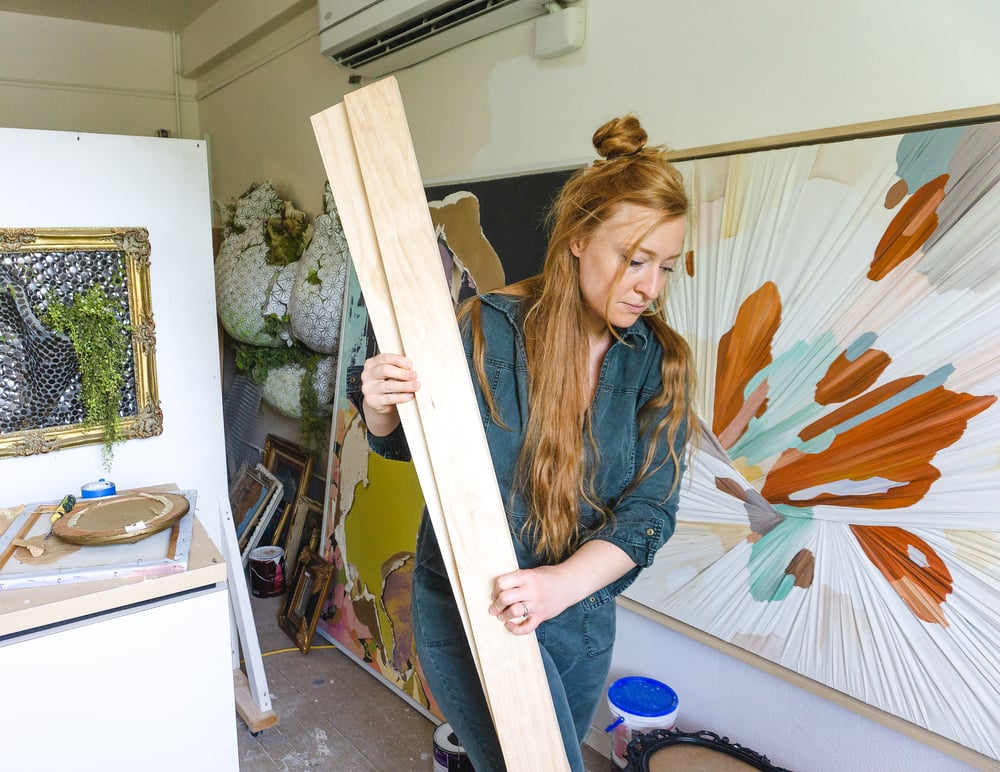 Can you tell us about your work?
Can you tell us about your work?
I work primarily in two different mediums: fabric compositions, and sheetrock excavations.
The fabric compositions are really where my art practice started. Towards the end of my undergraduate career, I had already begun to explore different techniques that would make my canvases more three-dimensional. This led to experimentation with different kinds of fabrics and different methods of creating compositions. I love the tension I can create using fabric more pliable than canvas. I started to think of the fabric compositions as sculptures, and it felt natural to lean further into the 3rd dimension.
In graduate school, I started experimenting with installation and sculpture. I wanted to draw people into whole spaces and make them consider their own bodies next to, or inside the art. This interest in spatial relationships spurred an investigation into different types of space. I became fascinated with the amount of time we spend in our homes specifically. Our homes are such an essential part of our health and well-being, but they are also wrapped up in the worlds of real estate speculation, design, and identity. From this point on, I started using the same materials we use to build and design our homes. These sorts of materials lent themselves naturally to sculpture and low relief works like the sheetrock excavations.
Can you tell us about your process?
Every piece is really different. The ideas for most of the larger sculptural work stem from research and reading. Often times, I am tasked with creating a larger work for a specific space. In this case, the existing space plays a significant role in the outcome of the artwork. I want whatever I am creating to feel relevant wherever it is going to live. Much of the artwork begins with a specific material I am drawn too, from there I will collect other materials that help create a narrative around that initial choice. 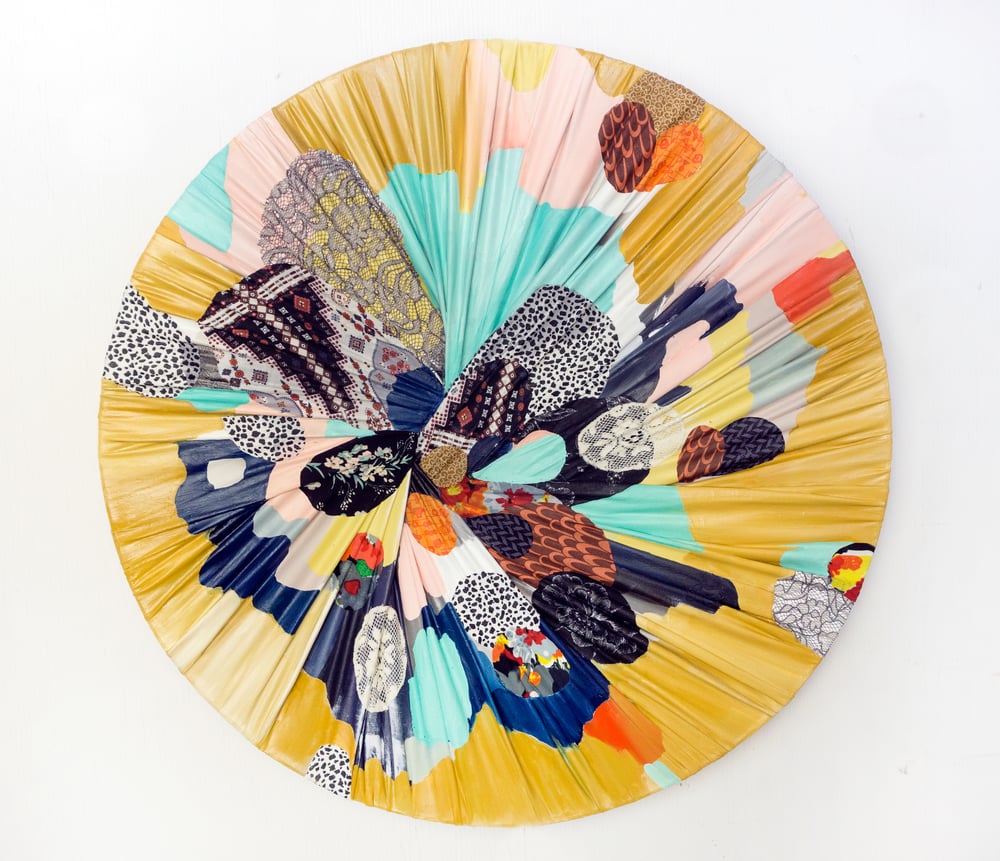
When you are looking for inspiration, what resources do you turn to?
I am truly fascinated by unexpected combinations of materials. Nowhere do I see such a variety of texture, pattern, and interest than in people’s homes. A tattered leather chair or a gilded tile excite me in different ways. I love the conglomeration of old things, new things, cheap things, expensive things, crafted things, and commercial things we find in homes. I think the reality of many people’s homes is starkly different from those in design magazines. They can be messy and complicated and still beautiful. When I combine various materials of differing quality I am creating a built portrait in a tighter more concise format. I like to think of the artwork as 4 inches of space where contrasting fabric, paint, etc aren’t limited by us having to live inside of those choices. The materials can tell a different and more interpretive story when elevated to an art form.
Walk us through a typical day in your studio. What is your routine? Has it changed with COVID-19?
Every day is different and depends on the project at hand. I have a painting studio in my home, as well as a studio in an arts building here in St. Louis. I have been incredibly fortunate during COVID-19. While public access to our studio building has stopped, artists have been able to use their individual spaces while following strict distancing and mask-wearing guidelines. Some of my site-specific contracts are on hold for now, and that is allowing me to focus on my personal practice, and hopefully get some new ideas started.
During these times finding the right rhythm to be productive in the studio can be a challenge, what advice do you have for staying productive and focused?
What helps me is creating some sort of deadline or expectation where I am not just accountable to myself, but to others. When quarantine orders first went into place, I started a charity art auction through my Instagram. The auction provided me with a weekly goal and an expectation from collectors and other folks who wanted to participate. During the last 4 weeks of the auction, I had to create a new work each week. The process wasn’t sustainable long term, but it pushed me through a very uncertain time in my art practice. Now that the auction is over, I am trying to figure out other motivators. I think many artists are struggling. It has helped me to reach out to my peers for critique and conversation, sometimes the rhythm comes when you get out of your own brain a bit.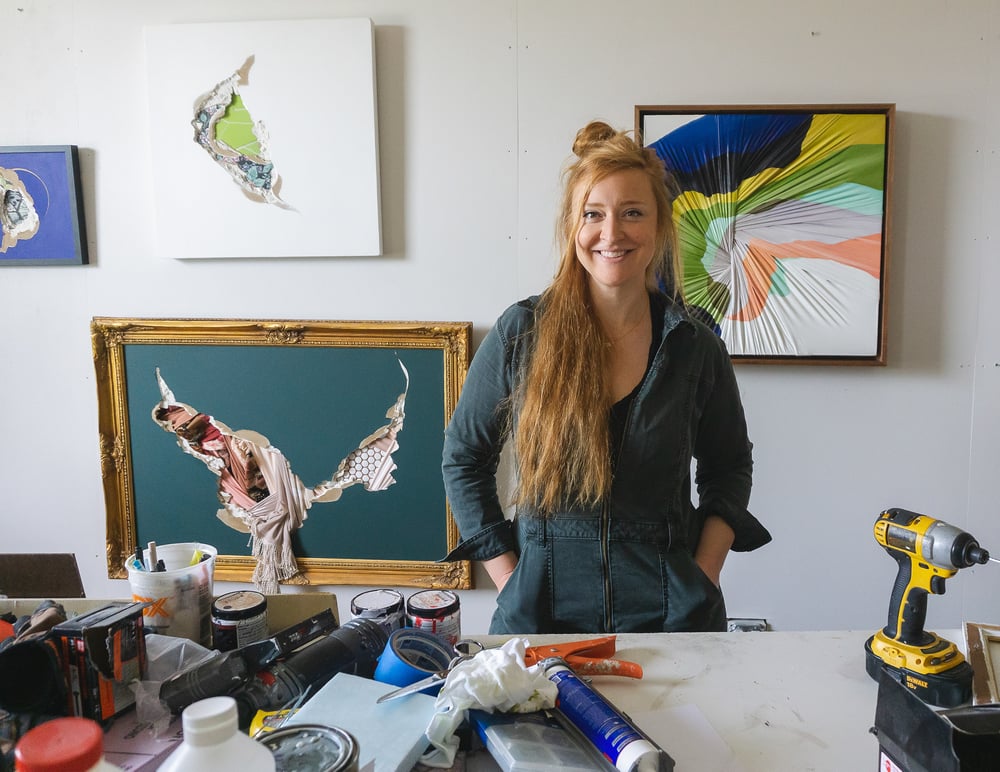 What is your advice for combating creative block?
What is your advice for combating creative block?
I try to read and write. I am guilty of too much media consumption, screen time, constant contact, or whatever you want to call it. Researching and reading slows down the process and allows me to explore the ideas I have in a measured way that feels more thoughtful. When I inundate myself with so much information, excitement about any of it gets dulled. A narrowed focus and a slower investment into something that interests me is usually what I need to break those creative blocks.
As an artist, how do you measure your success?
I think the next thing is always the thing that makes you feel successful. I’ve learned the milestones: the degree, the solo exhibition, the large commission, they only feed me in those moments. Upon completing any of those milestones, the feeling is rarely contentment. It sounds a bit bleak, but ultimately I think it’s what propels my practice. I don’t have an ultimate goal or an absolute achievement I am working towards. I think my art practice is going to be a journey with a lot of success and a ton of failure. There is an intrinsic motivation that is hard for me to describe, the milestones are nice, but ultimately not what fuels my practice. How do you see the art market changing? Where you do see yourself in this transition?
How do you see the art market changing? Where you do see yourself in this transition?
I am no expert on the ins and outs of the art market. I think traditional models are changing and probably need to change. I do feel that individual artists have more agency to advocate for themselves than ever before. I have also learned there are art appreciators outside of traditional venues. I feel the more I can connect directly to a broad range of folks, the more opportunities start happening. With all of the platforms available today, artists have an opportunity to show their work and their story in a very direct way. I think people outside of traditional markets really respond to this sort of interaction.
What advice do you have for artists who are beginning to build their careers? Have there been any habits or strategies that you have adopted that you feel have created more opportunities or visibility for your work?
As an artist who is still building a career, my advice to others and myself is just to keep making work and finding ways for the world to see it. Developing an art practice where you are constantly working is the most difficult part, but I think that consistency is really key. Even if you don’t have a show or a commission on the books people will want to invest in your art if you continuously let them into the process. Utilize the available platforms and present your work in a way that shows how much you care about it. If you are invested in your practice, other folks will be as well.
Do you consider yourself, and all artists, to be entrepreneurs? Why or why not?
I think many artists are entrepreneurs in the traditional sense of the word, but I also think many artists exist outside of that realm. People are making important artwork in every corner, of every community with or without that entrepreneurial spirit.
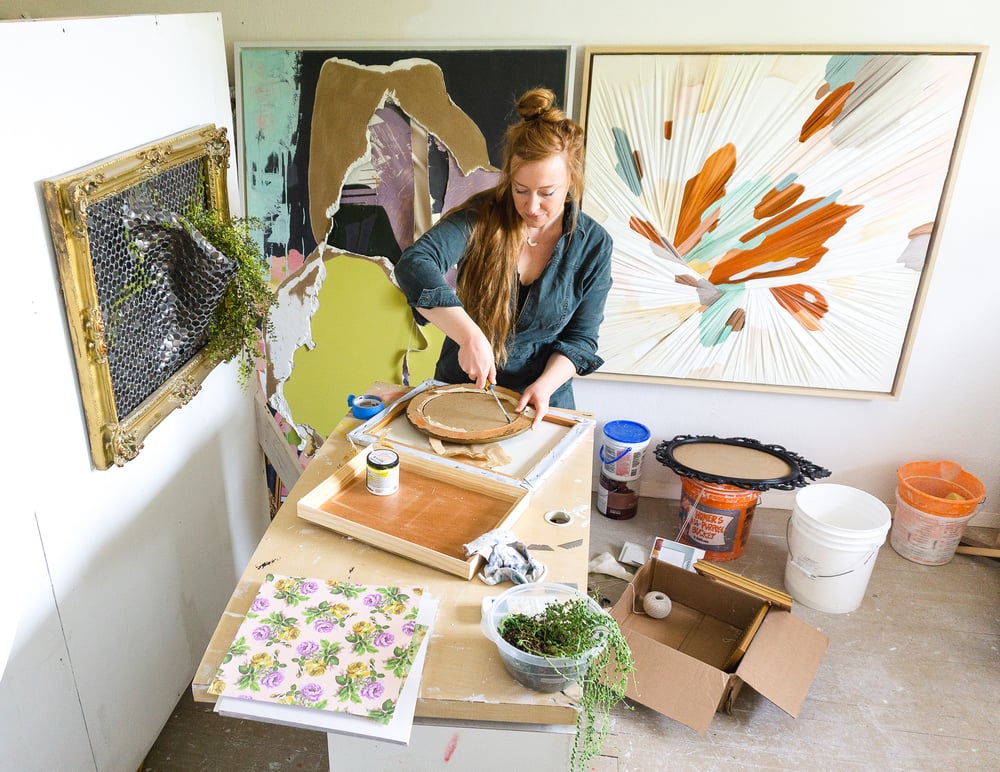
Failure is an inevitable part of success in any field. Do you have advice for overcoming setbacks?
It gets easier? The rejection. I heard an artist I admire tell folks to apply for so many opportunities that you forget what you even applied for. This way when you do get a win it’s a sweet surprise instead of a constant rejection. I think the lesson here is just that the most successful artists I know are the ones who are relentless. For every 10 applications I put out into the world I may only get 1. It just means I have to work extra hard to level up the odds.
What sparked your interest in partnering with TurningArt?
Turning Art came to me. Mari, Abby, and Alyce visited my studio here in St.Louis when they were pitching a project for a local client. I really felt like the 3 of them were interested in the art, and the process, and showed a real investment in artists. I was all about it.
What does having your artwork in the workplace and other commercial or public spaces mean to you?
I think art should be everywhere. Art has the ability to change the energy in a space.
To see more featured TurningArtists, return to our blog. To get Carrie Gillen's art in your space, set up a free consultation with an Art Advisor here!
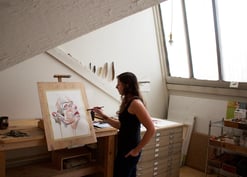



.jpg?width=332&height=177&name=%E6%A9%983-2%20(1).jpg)

